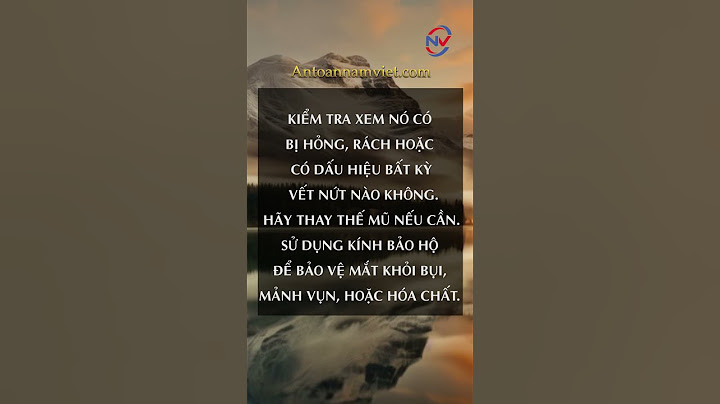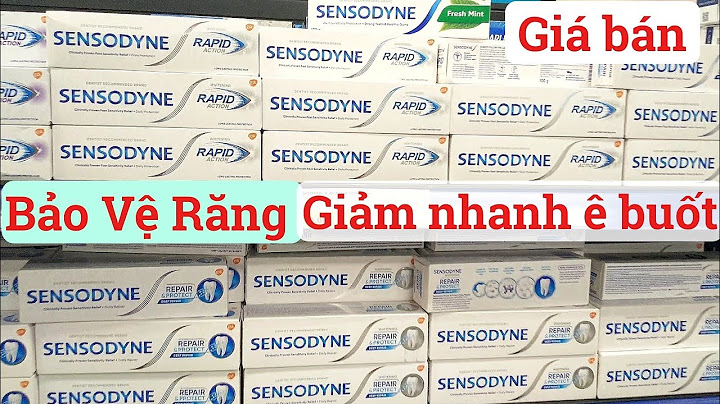The Zenitar was one of the first lenses I bought after getting a Pentax *ist DS kit in late 2005. While I’m not sure exactly why I opted for the Zenitar over something more practical, I ended up buying one new from an Ebay seller as it was cheap, said to be sharp, and interesting due to the fisheye feature. Show Technical specifications for the lens: Lens Mount: K-mount Lens Construction: 10 elements in 7 groups Angle of View: 180 degrees (83 degrees in APS-C) Aperture: F2.8 Number of Diaphragm Blades: 6 Minimum Aperture: F22 Minimum Focusing Distance: 1 ft (0.3048 meters) Filter Diameter: 26.5mm threaded rear mount type Maximum Magnification: 0.13x Dimensions: 63mm x 49mm Weight: 0.31 kg Case: soft Velcro closure type Objective Cap: Push on Hood: built-in (full frame) Lens Aperture Ring: yes Tripod Adapter: No Diaphragm Control: manual Focal Length: 16mm (equiv. 24.3mm) Notes: fisheye type lens General talk about the lens and its features: The Zenitar 16mm f2.8 Fisheye lens is a product from Russia that’s available through non-standard channels like Ebay and a few lesser known online stores (aka. use caution and research before buying). It’s a moderate wide angle lens when considering the APS-C crop factor, but still provides some fisheye distortion effect to the resulting images. The lens is fully manual and does not transmit any information to the camera body. Aperture is controlled by a small ring that goes in what feels to be half-clicks through the full range. The lens is primarily constructed of metal, which gives a good feel to the lens. The rubberized focus ring has a nice smooth feel when rotating. Focusing the lens isn’t particularly difficult thanks to it being a wide angle. On the back-end of the lens there is a thread to attach one of the 4 lens filters (3 colored and one clear). The front element is large and appears to be multi-coated to resist flare. There is a small built-in hood, but it is designed to block stray light with full frame cameras in mind. What I like about the lens: – The lens is nicely constructed, especially for the price I paid years ago. Now, it looks like the lens goes around $220, which is still a pretty good bargain. – As I mentioned before, the manual focus ring is smooth and effective. – Rendering can be pleasing to the eye with vibrant colors. This isn’t always the case though. – The colored filters are a fun little addition to the lens. What I’m not too fond of: – Prone to flare and visual artifacts in bright light. Although it’s easy to clone out any small artifacts, so I don’t consider that a big issue. – Completely manual focus and aperture with no data connection to the camera body, so EXIF data saved is limited. – Easy to get a finger into the frame on accident, especially with gloves on. – Lens cap is cheap and broke on me. – The aperture ring action is a bit cheap feeling as well as loud. Images with a bit of analysis: A few additional images: Conclusion: For the price, it’s a good option to experiment with fisheye and moderate wide angle photography. There are other options available to be bought new, but all cost more than the Zenitar. The Pentax 10-17mm Fisheye, which is around $300 more than the Zenitar. There are also quite a few lenses available from Sigma (10mm f2.8 and 15mm f2.8) as well as a few off-brand options like the Bower 8mm f3.5 Fisheye. While the image quality isn’t top-notch, it’s serviceable and at times quite good. Flare and artifacts can be an issue with the lens, but some of it is easily correctable in post-processing. You need to keep more in mind when using the lens as it is completely manual in operation. Given the price, it’s a decent purchase in my opinion.
NOTE: Because of the human rights abuses against LGBT people by the Russian government, as well as the recent proliferation of anti-LGBT hate crimes by the Russian people, I am no longer comfortable owning or promoting any piece of equipment that says "MADE IN RUSSIA." I will be selling my Zenitar 16/2.8 on eBay, and after it is sold, I will remove this web page, never to mention the lens again. Those who want to find out more about the persecution of LGBT people in Russia can read about it here: Russia: Putin signs anti-'gay propaganda' bill into law The 25 most shocking anti-gay stories from Russia so far An excellent protest video from the Russia Freedom Fund Full Frame Samples:     Crop Frame Samples:  Zenitar 16 f/2.8 at f/8, Canon EOS 40D (crop frame). Sun just outside of frame, shining on lens. Flare isn't as bad as you might think.  Zenitar 16 f/2.8 at f/8, Canon EOS 40D (crop frame). Lens pointed away from sun. 17-40 f/4L rectilinear lens on a crop body (for comparison): IntroductionIt is said fisheye lenses were cool back when bell bottoms were groovy. There might be some truth to that, at least with respect to the circular fisheyes (a.k.a. "tiny world" fisheyes) that portrayed a 180 degree hemisphere in the middle of the frame. However, "diagnoal" fisheyes, which map a 180 degree field of view from corner to corner of the frame, still provide a very useful geometry in certain situations. For instance, I recently considered how to shoot a large group of people in a small space, putting great emphasis on one central figure in the center of the frame. An ultrawide angle lens would convey the somewhat surreal perspective the particular shot demanded. However, I could hardly use my Sigma 12-24mm lens for the job. Indeed, that lens has a rectilinear geometry and would stretch the heads of everyone appearing in the margin. It would also diminish the emphasis on the central figure, since the stretched margins draw the eye. On the other hand, a fisheye lens would keep shapes relatively correct and convey a better proportionality, at the sacrifice of straight lines that would become curved. I could of course do a rough fish-transformation of a rectilinear image by spherizing it, but that would degrade the image, limit the field of view, and ultimately not achieve what I would really like to achieve. A fisheye lens is the best solution. Of course a fisheye is best used sparingly. Because it is such a specialty lens, it perhaps does not deserve the heavy investment that would better be applied to more commonly used optics. If there were ever justification for a "cheap" lens, this would be it. Fortunately the Russian made MC Zenitar 16mm f/2.8 fills this role beautifully, at least on a full-frame 35mm camera. Build quality, frankly, is quite bad. The EOS mounting flange is too thin, so the lens fits loosely. The miniscule sunshade protrusion is often misoriented. (It was on mine.) There are sometimes even focus problems that must be corrected by re-aligning the focusing threads. However, ignoring those shortcomings, the lens costs only $200 new, and it is surprisingly sharp. According to other reviews, it gives much more expensive major-brand fisheyes (e.g. Canon, Nikon) a run for their money in image quality, if not outright stomping them into the mud. While I have no comparative data in this review, I am quite impressed with the image quality the lens delivers and don't doubt that it compares very favorably to more expensive lenses. Finally, it is very small, light, and easy to carry, and it is useful both on a full frame body (as a fisheye) and on a crop body (as an alternative geometry ultrawide. The lens has been reviewed by a few others, including Ken Rockwell, Bob Atkins, and NK Guy. None of these is the perfect review. Atkins and NK Guy do not rigorously test the lens or show 100% crops from the images. Rockwell is very thorough in his review but boasts that much of the information on his site is fictitious. (I think I believe his test images, but there are a few comments in the review that are obviously false, for instance with the impossibility of metering with a Canon EOS 5D.) For these reasons, I decided I would provide my colleagues a more thorough, accurate, and credible review than is currently available on this lens. (I test all my lenses anyway, so I'm simply posting my results on this particular lens.) Test ImagesLet's dive in with some test images first, and then I'll offer my interpretations. I shot my test images in the back yard with my Canon EOS 5D nothing elaborate or remotely artistic! Please note that the dull colors are more a matter of drought than anything else no fault of the lens. I shot what I consider one of the least forgiving and most informative subjects -- long needled pines. Here is the scene at f/16, reduced to 20% magnification, followed by both center and corner details at 100% magnification at each available aperture. I have shown the 100% crops both unsharpened (either in camera or in postprocessing) and sharpened (in postprocessing only). To get some perspective on these 100% crops, they would be like samples snipped from a 4 ft tall print (as viewed on most monitors). They are taken from the red-framed areas on the photo below:     The first thing I notice is that the lens is rather soft wide-open, which is not particularly unusual for a lens. It's not horrible, and indeed it could be used wide open for producing a smaller or lower resolution image. The second full image, above, shows the lens at its worst, wide open, with sharpening in postprocessing. Although the image is not razor sharp, it is nevertheless usable for some applications. On my lens copy, f/4 is vastly superior to f/2.8 in center detail, and f/5.6 is slightly better still. Above f/5.6 there appears to be little difference across apertures in the center, up to f/16 where diffraction effects are barely visible and f/22 where they are a bit greater still. The sharpest apertures are f/5.6 - f/11. My lens performs relatively well in corner detail throughout the aperture range. Oddly, corner detail seems a bit better than center detail wide open, although it is still somewhat fuzzy. Sharpness gets slightly better at f/5.6 and f/8 and is relatively constant until the diffraction falloff, which just edges in at f/16. This makes the Zenitar 16 very similar to many other lenses that reach their peak sharpness 2-3 stops from their wide-open aperture. This lens has a mild flair/ghosting issue. The ghosts take the form of large, indistinct blobs, and they are apparent both in sunlight and indoor lighting. They reduce the contrast of the lens overall, but not as much as I've seen in some other lenses. Considering the wide angle of this lens, a bit of ghosting and flare are not surprising at all. An example of this lens' flare performance is seen in the second crop-frame shot at the top of this page (shot of a crowd assembled in front of the Capitol building, looking back towards the Washington Monument. The sun was shining brightly on the entire face of the lens. The next shot, below that one, shows the lens performance when pointed away from the sun. There is obviously some contrast loss in the first image, but not as much as I would expect.   BuildUnlike some, I am not particularly impressed with the build of the Zenitar. I note the following issues: (1) As mentioned above, the sunshade on my copy was misaligned, leaving small "nicks" at the upper right and lower left corners of the images (see test image). I was able to correct this by loosening three set screws with a precision screwdriver, turning the shade about 5mm to the right, and then retightening. (2) The EOS mounting flange is very thin and loose, and the flange falls sufficiently short of its ideal diameter as to give the lens a tiny bit of lateral wiggle in the mount. The mount wiggles when either the focus or aperture rings are turned. (3) There is no alignment spot for mounting the lens. (4) When unmounting the lens, it is possible to continue turning it counterclockwise well past where there should be a detent. My lens came with a missing screw. Perhaps that was the detent? (5) I find the aperture ring difficult to turn. This may be the result of parts that fit too snugly, but it also relates to bad ergonomics, with a ring that's frankly difficult to grasp. (6) Finally, the distance scale isn't quite accurate. Actual focal distance is approx 75% of what the scale indicates. I think all these defects are all indicative of poor machining tolerances. Ease of UseMany people are afraid of using a manual lens on a modern camera. Using the Zenitar 16 on a modern camera is actually a snap. I've used mine on both my Canon EOS 40D and EOS 5D without a hitch. Both of these cameras (and most other cameras) are capable of stop-down metering. Simply, when the camera body does not (electronically) "see" a lens connected to it, it assumes any mounted lens is a manual one, and when set to the Av mode (Canon's aperture priority mode) it adjusts shutter speed to expose correctly for however much light is streaming through the lens (ignoring aperture, which doesn't really matter for this automatic mode anyway). In other words, to meter, set the camera to Av, dial in whatever aperture you want to use (on the lens), point, and shoot. The exposure will be correct. Easy. For more on stop-down metering, including a discussion of older stop-down metering modes, please see this excellent discussion. Focus is almost as easy. You have four choices. Use whichever one sings to you: (1) Open up the lens, set your best focus with a critical eye, stop down the lens, and shoot. (2) Install a split-circle focus screen in your camera to set your focus optically, just like in the good old days. You'll still need to focus with the lens wide open and shoot with it stopped down, but your focus will be more accurate. (3) Go by the numbers. If you're planning on shooting at f/11, for instance, you're going to have a huge depth of field anyway. Just guesstimate your distance, and set it with the focus ring. You seriously won't do much better, and this would be my method of choice with this lens. (4) Use an M42 version of the lens, combined with an M42 to EOS (or whatever your camera uses) adapter with the focus confirm chip. Then focus as you would when using a Canon EF lens in manual focus mode. However, be aware that the chip will defeat the stop-down metering. Also be aware that the chip is attached with epoxy and that it can fall off into your mirror box, causing damage. I wouldn't recommend doing it. (Note: be careful of mirror clearance on a full frame EOS camera, as there is one report of an M42 adapted lens binding the mirror.) You can also epoxy a focus confirm chip directly to the back of the EOS version of the Zenitar lens, but alignment might be difficult. The best solution (5) would be for Canon to stop disabling focus confirm when manual lenses are attached. Their continuing to punish us for using non-Canon EF lenses is beyond annoying. SummaryAll in all, the Zenitar is an optically impressive little lens at a fantastic value. It's not something a beginner will know how to use, as one can't use the P mode, point, and shoot. However, it is easy to use for anyone with an intermediate knowledge of photography. I would estimate its optimal range at f/5.6 through f/11 and its usable range at f/4 through f/22 (and f/2.8 if the final image is to be fairly small). Its mere $200 price tag well befits its specialty use. If it were $600, like a Canon or Nikon fisheye, I simply wouldn't buy it, no matter how good the image quality. Such a seldom-used lens is simply not worth that sort of money. I also wouldn't bother with it if the image were junk. However, this is one of those nice little bargains that is simply too cheap to pass up. |




















